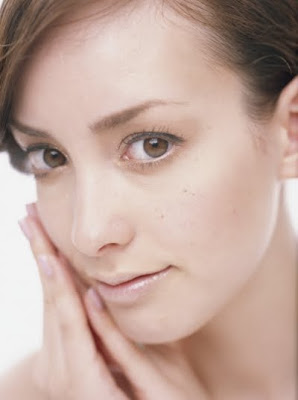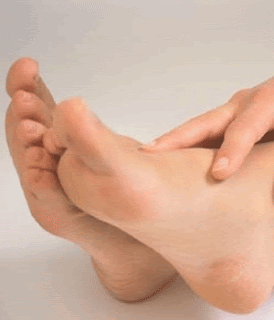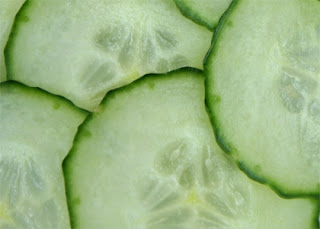
Allergy is a hypersensitive disorder of the immune system. Allergic reactions occur to normally harmless environmental substances known as allergens; these reactions are acquired, predictable, and rapid.
Common allergic reactions include eczema, hives, hay fever, asthma attacks, food allergies, and reactions to the venom of stinging insects such as wasps and bees.
Mild allergies like hay fever are highly prevalent in the human population and cause symptoms such as allergic conjunctivitis, itchiness, and runny nose. Allergies can play a major role in conditions such as asthma. In some people, severe allergies to environmental or dietary allergens or to medication may result in life-threatening anaphylactic reactions.
CausesAn allergy is caused by an oversensitive immune system, which leads to a misdirected immune response. The immune system normally protects the body against harmful substances, such as bacteria and viruses. When an allergic reaction occurs, it is a result of the immune system reacting to substances (allergens) that are generally harmless and in most people do not cause an immune response.
Risk factors for allergy can be placed in two general categories, namely host and environmental factors. Host factors include heredity, gender, race, and age, with heredity being by far the most significant. However, there have been recent increases in the incidence of allergic disorders that cannot be explained by genetic factors alone. Four major environmental candidates are alterations in exposure to infectious diseases during early childhood, environmental pollution, allergen levels, and dietary changes.
The symptomsAllergic Rhinitis
Allergic rhinitis (�hay fever�) is the most common of the allergic diseases and refers to seasonal nasal symptoms that are due to pollens. Year round or perennial allergic rhinitis is usually due to indoor allergens, such as dust mites, animal dander, or molds. It can also be caused by pollens. Symptoms result from the inflammation of the tissues that line the inside of the nose (mucus lining or membranes) after allergens are inhaled. Adjacent areas, such as the ears, sinuses, and throat can also be involved. The most common symptoms include:
* Runny nose
* Stuffy nose
* Sneezing
* Nasal itching (rubbing)
* Itchy ears and throat
* Post nasal drip (throat clearing)
Asthma
Asthma is a breathing problem that results from the inflammation and spasm of the lung�s air passages (bronchial tubes). The inflammation causes a narrowing of the air passages, which limits the flow of air into and out of the lungs. Asthma is most often, but not always, related to allergies. Common symptoms include:
* Shortness of breath
* Wheezing
* Coughing
* Chest tightness
Allergic Eyes
Allergic eyes (allergic conjunctivitis) is inflammation of the tissue layers (membranes) that cover the surface of the eyeball and the undersurface of the eyelid. The inflammation occurs as a result of an allergic reaction and may produce the following symptoms:
* Redness under the lids and of the eye overall
* Watery, itchy eyes
* Swelling of the membranes
Allergic Eczema
Allergic eczema (atopic dermatitis) is an allergic rash that is usually not caused by skin contact with an allergen. This condition is commonly associated with allergic rhinitis or asthma and features the following symptoms:
* Itching, redness, and or dryness of the skin
* Rash on the face, especially children
* Rash around the eyes, in the elbow creases, and behind the knees, especially in older children and adults (rash can be on the trunk of the body)
Hives
Hives (urticaria) are skin reactions that appear as itchy swellings and can occur on any part of the body. Hives can be caused by an allergic reaction, such as to a food or medication, but they also may occur in non-allergic people. Typical hive symptoms are:
* Raised red welts
* Intense itching
Allergic Shock
Allergic shock (anaphylaxis or anaphylactic shock) is a life-threatening allergic reaction that can affect a number of organs at the same time. This response typically occurs when the allergen is eaten (for example, foods) or injected (for example, a bee sting). Some or all of the following symptoms may occur:
* Hives or reddish discoloration of the skin
* Nasal congestion
* Swelling of the throat
* Stomach pain, nausea, vomiting
* Shortness of breath, wheezing
* Low blood pressure or shock
TreatmentsThe best �treatment� is to avoid what causes your allergies in the first place. It may be impossible to completely avoid everything you are allergic to, but you can often take steps to reduce your exposure. This is especially important for food and drug allergies.
Medications that can be used to treat allergies include the following:
* Short-acting antihistamines � these are generally non-prescription and often relieve mild-to-moderate allergy symptoms but they can cause drowsiness. In addition, these antihistamines can blunt learning in children (even in the absence of drowsiness). An example is diphenhydramine. One formerly prescription medication, loratadine (Claritin), is now available over the counter. It does NOT tend to cause drowsiness or affect learning in children.
* Longer-acting antihistamines cause less drowsiness and can be equally effective; usually they do not interfere with learning. These medications, which require a prescription, include fexofenadine (Allegra) and Cetirizine (Zyrtec).
* Nasal corticosteroid sprays are very effective and safe for people with symptoms not relieved by antihistamines alone. These prescription medications include fluticasone (Flonase), Mometasone (Nasonex), and Triamcinolone (Nasacort AQ).
* Decongestants may also be helpful in reducing symptoms such as nasal congestion. Nasal spray decongestants should not be used for more than several days because they can cause a �rebound� effect and make the congestion worse. Decongestants in pill form do not cause this effect.
* Leukotriene inhibitors � Montelukast (Singulair) is a prescription medicine approved to help control asthma and to help relieve the symptoms of seasonal allergies.

























